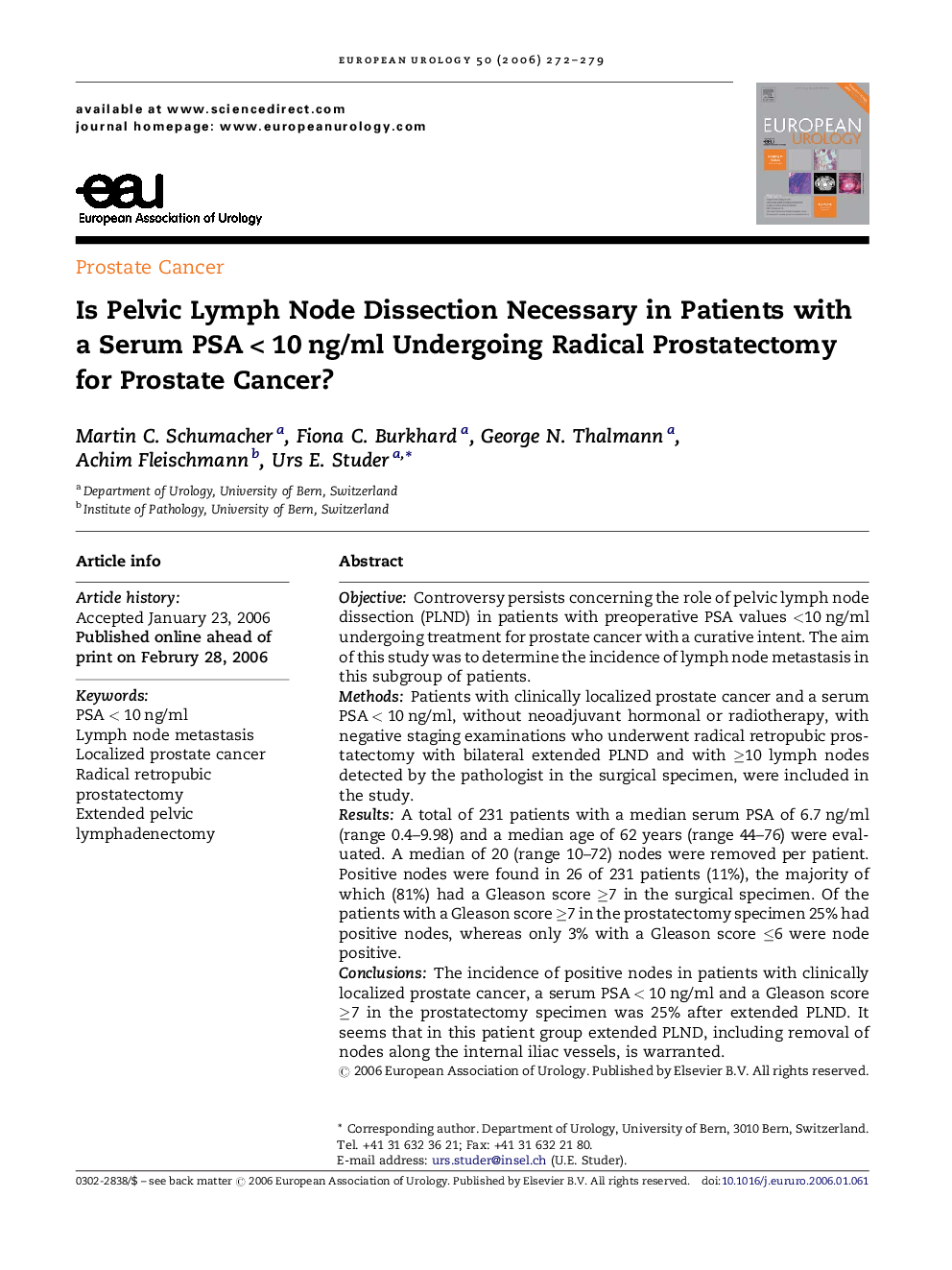| Article ID | Journal | Published Year | Pages | File Type |
|---|---|---|---|---|
| 3929053 | European Urology | 2006 | 8 Pages |
ObjectiveControversy persists concerning the role of pelvic lymph node dissection (PLND) in patients with preoperative PSA values <10 ng/ml undergoing treatment for prostate cancer with a curative intent. The aim of this study was to determine the incidence of lymph node metastasis in this subgroup of patients.MethodsPatients with clinically localized prostate cancer and a serum PSA < 10 ng/ml, without neoadjuvant hormonal or radiotherapy, with negative staging examinations who underwent radical retropubic prostatectomy with bilateral extended PLND and with ≥10 lymph nodes detected by the pathologist in the surgical specimen, were included in the study.ResultsA total of 231 patients with a median serum PSA of 6.7 ng/ml (range 0.4–9.98) and a median age of 62 years (range 44–76) were evaluated. A median of 20 (range 10–72) nodes were removed per patient. Positive nodes were found in 26 of 231 patients (11%), the majority of which (81%) had a Gleason score ≥7 in the surgical specimen. Of the patients with a Gleason score ≥7 in the prostatectomy specimen 25% had positive nodes, whereas only 3% with a Gleason score ≤6 were node positive.ConclusionsThe incidence of positive nodes in patients with clinically localized prostate cancer, a serum PSA < 10 ng/ml and a Gleason score ≥7 in the prostatectomy specimen was 25% after extended PLND. It seems that in this patient group extended PLND, including removal of nodes along the internal iliac vessels, is warranted.
